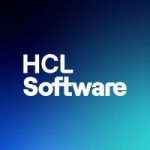I work for civil ministries, and we exclusively use Microsoft products because we get them for a low price.
I handle security with Fortinet, and I run virtualization with Citrix. Those are my main tasks.
Microsoft has many consultants who can provide support.
Some of the Microsoft implementations of protocols are far from standard. They make their own standards, and you're out if you can't convert to them. With other Unix-based solutions, we had more flexibility to react to special problems we needed to solve. We can only solve the problem now if the problem is solvable with Microsoft.
Similarly, it is tricky to integrate Microsoft Exchange Online if you are in an infrastructure provided by other vendors. We have had an alternative solution to Exchange since 2016, and if we had problems, it was never a problem with Microsoft. It was a problem with the alternative product. The problem is that Microsoft has a standard, and you need to stick to it.
Even if the reason for the problems is Microsoft, the SMTP stack in Exchange is far from the RC of SMTP. If the alternative solution makes extensions to DNS for their active directory and if you use an RC DNS server, you would have problems with some of the records that Microsoft produces. They are not replicated. If you begin with Microsoft, you make everything Microsoft. It is difficult to mix Microsoft with other vendors or with other products. And you get less support if you want to choose a solution other than Microsoft.
Moreover, Exchange Online should work on integration with other services like Teams because when they work together, you gain benefits that other companies might not be able to give you.
I have been using Microsoft Exchange Online since 2012, and we will use it in the future.
We formerly worked with Unix-based mail servers. The positive side is that you're flexible. You could use different hardware. You get limited with Microsoft.
Microsoft solutions are expensive.
I prefer to use solutions like LibreOffice since they are free and cheaper, but our partners might have problems reading our data, and we would face difficulties cooperating.
The main problem with Microsoft products is that we get very dependent on them. Until 2016, I had to make decisions for the budget for the Southwest of Germany, and when you work with Microsoft, your budget is fixed to them, and you lose your ability to work with other solutions. That was a bad situation for us.
If you don't plan to use other solutions in the future, it's a good product. Otherwise, you have to be prepared that some problems may arise. Once you get married to Microsoft, it's a fierce divorce if you want to leave. I rate the solution an eight to nine out of ten.


















